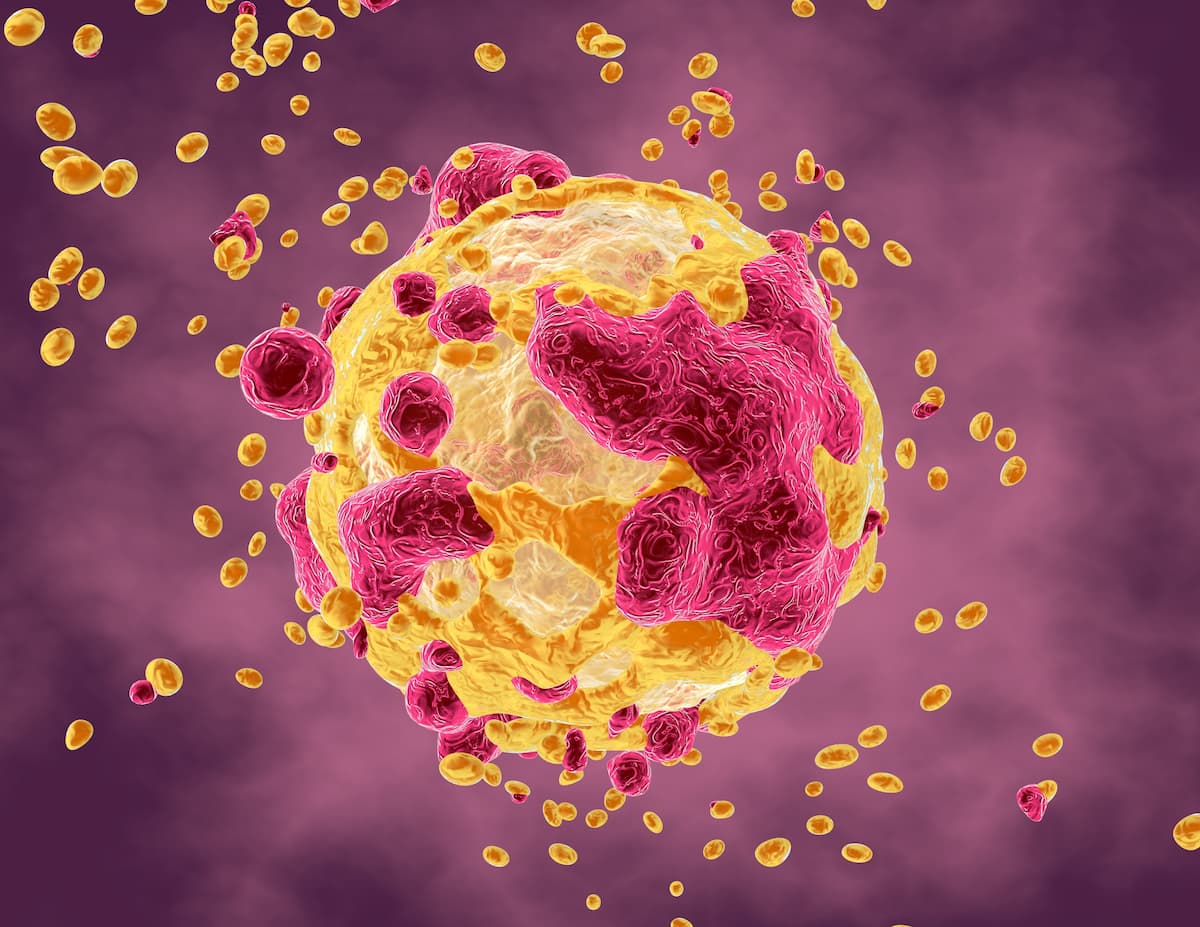pCR Prognosticates Survival Following Chemo/Radiation in Soft Tissue Sarcoma
An ancillary analysis of 2 clinical trials finds that pathologic complete response may be a prognostic factor of clinical outcomes in soft tissue sarcoma in future studies.
Pathologic complete response (pCR) correlated with a survival benefit in patients with soft tissue sarcoma receiving neoadjuvant chemoradiotherapy in the phase 2 RTOG 9514 trial (NCT00002791) or preoperative image-guided radiotherapy alone in the phase 2 RTOG 0630 trial (NCT00002791), according to findings from an ancillary analysis published in JAMA Oncology.
"pCR should be considered a prognostic factor for clinical outcomes in future [soft tissue sarcoma] clinical trials," according to the investigators of the ancillary analysis.

Investigators reported that 123 patients were evaluable for a pCR across both respective studies, including 27.5% of those in RTOG 9514 and 19.4% in RTOG 0630.. In the 0% tumor viability group, the 5-year overall survival (OS) rate was 100% across both studies. The 5-year OS rates for patients with greater than 0% tumor viability were 76.5% (95% CI, 62.3%-90.8%) in the RTOG 9514 trial and 56.4% (95% CI, 43.3%-69.5%) in the RTOG 0630 trial.
Patients with greater than 0% tumor viability experienced significantly worse OS in univariate (P = .002) and multivariate analyses (P = .01); investigators could not determine the hazard ratio (HR) for tumor viability because there were no events in the 0% tumor viability group.
The 5-year disease-free survival (DFS) rates were 88.9% (95% CI, 68.4%-100.0%) and 62.7% (95% CI, 46.6%-78.8%) for the RTOG 9514 population in those with 0% and greater than 0% tumor viability, respectively. In RTOG 0630, the 5-year DFS rates were 90.9% (95% CI, 73.9%-100.0%) and 40.0% (95% CI, 27.1%-52.9%) for patients with 0% and greater than 0% tumor viability, respectively.
Investigators reported that pCR was associated with better OS (P = .01) and DFS vs those who achieved less than a pCR (HR, 4.91; 95% CI, 1.51-15.93; P = .008).
“The ancillary analysis with RTOG studies 9514 and 0630 has demonstrated that pCR was associated with improved survival outcomes in patients with [soft tissue sarcoma] who receive preoperative therapy,” the study authors stated. “To this end, pCR should be considered a prognostic factor for clinical outcomes in future [soft tissue sarcoma] clinical trials.”
Investigators of the ancillary analysis used long-term data from the phase 2 RTOG 0630 trial and the phase 2 RTOG 9514 trial. In RTOG 9514, patients received chemotherapy interdigitated with radiotherapy. In RTOG 0630, patients received preoperative radiotherapy only.
The primary objective of the analysis was correlating the percentage of tumor viability after surgery with survival and disease outcomes. Secondary objectives included comparing local and central reads of histologic type, histologic grade, and R status. Investigators calculated OS and DFS rates using the Kaplan-Meier method.
The analysis included data from 79 patients in the RTOG 0630 trial and 64 patients in the RTOG 9514 trial. Between both patient populations, the most common histologic diagnoses based on review by local pathologists included liposarcoma (26.6%), undifferentiated pleomorphic sarcoma (25.2%), undifferentiated spindle cell sarcoma (21.7%), and leiomyosarcoma (11.9%). Per central review, the most common histologic diagnoses included undifferentiated pleomorphic sarcoma (29.4%), liposarcoma (16.1%), myxofibrosarcoma (14.0%), and leiomyosarcoma (10.5%).
Overall, 18.9% of patients had grade 1 disease, 29.4% had grade 2 disease, and 49.7% had grade 3 disease per local grading, with corresponding figures of 9.1%, 23.1%, and 59.4% per central review. Additionally, 81.5%, 15.6%, and 1.5% of patients had R0, R1, and R2 resections based on local read, as well as 83.0%, 14.8%, and 0.0% by central review.
With a median follow-up of 6.0 years in the RTOG 0630 trial, the estimated 5-year OS rate was 62.1% (95% CI, 51.2%-73.0%), the estimated 5-year local failure rate was 12.7% (95% CI, 6.5%-21.1%), and the estimated 5-year distant failure rate was 45.3% (95% CI, 33.8%-56.0%). Additionally, the 5-year DFS rate was 47.5% (95% CI, 36.4%-58.6%), and the 5-year distant DFS (DDFS) rate was 52.1% (95% CI, 40.9%-63.3%). According to the investigators, long-term data from RTOG 0630 support reduced target volumes as appropriate for image-guided radiotherapy.
Investigators noted moderate agreement in local and central review of histologic types (κ statistic, 0.51; 95% CI, 0,41-0.61) as well as histologic grades (κ statistic, 0.43; 95% CI, 0.31-0.56). Additionally, there was near perfect agreement between local and central review of R status (κ statistic, 0.83; 95% CI, 0.71-0.96).
A greater than 0% tumor viability correlated with worse distant DDFS outcomes in univariate (HR, 4.41; 95% CI, 1.37-14.21; P = .01) and multivariate analyses (HR, 4.33; 95% CI, 1.32-14.14; P = .02). Additionally, a greater than 0% tumor viability correlated with worse distant metastasis outcomes based on univariate (HR, 3.72; 95% CI, 1.15-12.09; P = .03) and multivariate analyses (HR, 4.09; 95% CI, 1.25-13.36; P = .02).
Patients who had greater than 0% tumor viability did not experience significantly worse local failure outcomes in univariate analysis (P = .08). Investigators could not determine HRs for this outcome because there were no events in the 0% tumor viability group.
Reference
Wang D, Harris J, Kraybill WG, et al. Pathologic complete response and clinical outcomes in patients with localized soft tissue sarcoma treated with neoadjuvant chemoradiotherapy and radiotherapy: the NRG/RTOG 9514 and 0630 nonrandomized clinical trials. JAMA Oncol. Published online March 30, 2023. doi:10.1001/jamaoncol.2023.0042
Sarcoma Awareness Month 2023 with Brian Van Tine, MD, PhD
August 1st 2023Brian Van Tine, MD, PhD, speaks about several agents and combination regimens that are currently under investigation in the sarcoma space, and potential next steps in research including immunotherapies and vaccine-based treatments.